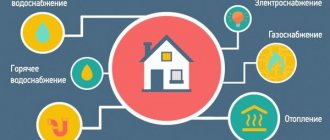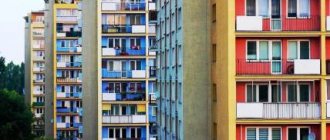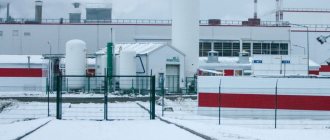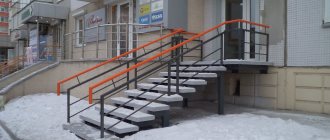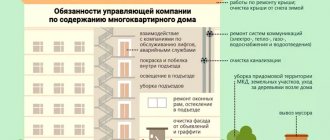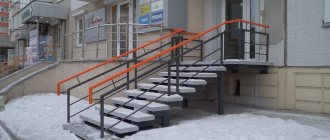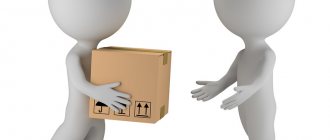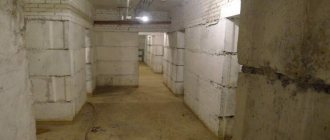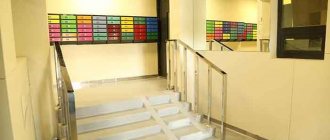Requirements
The rules for maintaining common property in an apartment building are determined by law. The Code establishes the principles for the use and management of property. This allows us to comply with the sanitary regime, technical regulation, and consumer rights. Homeowners must maintain the safety of structures, citizens, and property. The law prescribes the basic principles of residence.
The common property of the owners of premises in an apartment building must be maintained without obstacles to the use of residential and non-residential real estate. Land owners can independently manage their property. While exercising all rights, owners must not infringe on the interests of other citizens. Registration is needed to regulate people's residence.
The law prescribes the obligation of owners to ensure the normal operation of communications, devices, and equipment. Only when they have been registered can they fully function. Residents must receive utilities in full at all times. The Code defines liability for violation of this right. Property owners need to maintain the architectural appearance of the house based on design documents. These and other content features are included in the law.
The following rules for maintaining common property in an apartment building apply to residents:
- Periodic inspection of the property, after which the presence of problems and defects is determined. Based on this, an act is drawn up according to which repair work is to be carried out. If the deficiencies do not comply with legal standards, they must be eliminated as soon as possible. The law establishes rules for eliminating various types of defects in premises;
- Cleaning and regular cleaning of common areas. According to the Housing Code of the Russian Federation, the premises and the adjacent territory are processed. The time of year must be taken into account, since the types of work may differ in each season;
- Constant garbage collection. There is a waste disposal area in the courtyards of an apartment building. Workers constantly ensure their elimination;
- Following safety rules, which protects citizens from adverse factors;
- Maintenance of improvement objects;
- Carrying out repair work, as well as carrying out the necessary measures for seasonal operation. The Code includes rules for preparing for all seasons;
- Organization of energy saving events;
- Installation and maintenance of metering devices for various equipment.
The responsibility of management and maintenance is under the control of the apartment owners or HOA. According to the Housing Code of the Russian Federation, all types of necessary work are established by the owners at a meeting, which must be held regularly. Many other issues of a general house nature are resolved at them, including the distribution of shares.
Current repairs may be required based on the decision of the homeowners, and the law only determines the rules for its implementation. First, an inspection report is drawn up, after which damaged parts of the house are identified, and the work is established. The identification and appointment of workers is the responsibility of the HOA members.
All repair activities, including eliminating defects in doors and windows, are paid for by the owners of the premises. The Housing Code includes principles for carrying out major repairs. This is also determined by the decision of the meeting. Major repairs involve replacing elements of the house due to wear and tear. The house is subject to restoration if damage has occurred or the premises no longer meet safety requirements.
Rules for the operation of common property
There are rules for the use of common property of apartment buildings. All residents of the house must adhere to them. Otherwise, you may be held accountable for violating the provisions of current legislation.
Rules for the use of common property in apartment buildings:
- citizens are obliged to use the premises belonging to all residents of the house on equal rights, only for its intended purpose. For example, only heating equipment can be placed in a boiler room. This place is not intended for other items and devices. It is not suitable for human habitation;
- It is prohibited to deteriorate the condition of common property in any way. Premises and engineering systems must be treated with care.
Maintenance costs
Property owners must bear the cost of maintaining common property. When calculating the value, the shares of all owners are taken into account. It turns out that the amount of payment for repairs depends on the area of the apartment that is in the property. Registration provides an obligation to participate in financial matters
The amount of payments required for general house repairs is necessarily determined by the owners. This takes into account the list of works, the quality and volume of necessary services. The determination and order regarding the fact of carrying out repair work is established at the meeting.
Control
It is the owner's responsibility to properly maintain the common property. The Housing Code determines the rules of use. Monitoring compliance with all requirements is carried out by regional executive authorities.
Management companies that perform any services during the maintenance of common property are responsible to the owners for the proper implementation of all work. Owners have the right to control the fulfillment of all obligations performed by the HOA.
Responsible persons officially appointed by the owners can deal with these issues. They will oversee the volume, quality and list of services. All works can be verified by legal means, for example, through peer review. Owners have the right to demand that defects in the premises be eliminated.
Latest edition of Russian Government Decree N491
Russian Government Resolution No. 491 was adopted on August 13, 2006. This regulatory document provides a list of rules regarding the maintenance of common property in apartment buildings.
The common property of an apartment building includes engineering water supply systems for hot and cold water, gas supply (clause 5 of RF PP No. 491), heating (clause 6 of PP No. 491) and electricity supply (clause 7 of PP No. 491).
According to the second paragraph of the first section of Resolution No. 491, this category also includes non-residential premises, common house metering devices, foundations, local areas, and load-bearing structures of the building. The second section of this Resolution contains all the requirements for the maintenance of common property.
Their implementation ensures the reliability and safety of living in apartment buildings, the constant readiness of utilities, metering devices and other equipment to supply the necessary resources, and compliance with the legal rights and interests of apartment owners.
In accordance with paragraph 11 of PP No. 491, the concept of maintaining the common property of the house includes its inspection, as well as a number of works to ensure its proper technical condition.
Resolution of the Government of Russia No. 491 is periodically amended. The latest edition is November 23, 2021.
Why do you need an inspection report?
The Housing Code regulates all issues related to the maintenance of residential premises. The common property of the owners of premises in an apartment building and control over its condition is the responsibility of all residents. In case of emergencies, you need to assemble a commission that draws up the necessary documentation.
Inspection report is a document that describes the condition of the premises during the inspection period. It is created when a property needs to be checked for safety. The Code establishes that such documentation must be created in emergency situations.
Each owner has his own shares, and these facts must be taken into account in the design. There is a generally accepted template for its compilation. There are some features of filling out documentation. After this, the necessary list of works necessary to restore the operation of the premises is assigned.
An inspection report is required when:
- Real estate rental, purchase, sale, exchange;
- Violation of the rights of owners, for example, during flooding, resulting in damage to property.
Rules for maintaining premises
Staircases, lobbies, and corridors are provided with reliable lighting devices; rooms that do not have natural light are illuminated throughout the day. It is recommended to turn off the staircase lighting centrally - from one point in a house or group of houses, or automatically.
Basements and semi-basements
With technically competent operation of buildings, premises located in basements and semi-basements are kept constantly clean, dry, and regularly ventilated in the summer; waste collection chambers in basements are emptied in a timely manner, all pipelines running in basements, as well as entrances, are maintained in good condition.
If damp spots and mold are found in the basements and condensation forms on the water pipes, the basement is drained through open windows and doors or through exhaust ventilation devices or by additionally installing lattice doors at the entrances to the basements. During warm, dry periods of the year, it is recommended to close basements only with lattice doors to improve ventilation. If the listed measures do not give the desired result, then an inspection is carried out and the reasons for the dampening of the structures are studied by opening individual places, removing pits from the outside of the basement walls, etc.
When basements are flooded, it is necessary first of all to establish the cause of the flooding by carefully examining the building, then eliminate the cause of the water ingress, and only then begin pumping, which should be carried out under the supervision of a caretaker technician.
The preparation of basements for use in winter is carried out in advance, and in the summer: they ensure the tightness of the entrance doors to the basement, hatches for loading coal and doors of waste collection chambers, repair window frames, insulate the water meter, correct or reinstall the insulation of pipelines passing in the basements, eliminate all minor damage found in floors, walls and ceilings.
In winter, the maintenance service promptly clears snow from external entrances and stairs to basements, and with the onset of thaws, removes snow from the building at a distance of at least 2 m. In the cold season, basements are inspected at least once a month.
Attic spaces
Most modern residential and public buildings and almost all industrial buildings are built without attics. Old buildings, as a rule, have attic spaces, and the technical maintenance service provides care for them along with other rooms.
The operational significance of the attic for a building is extremely high: attic spaces help maintain the temperature and humidity conditions in the heated rooms located underneath. The influence of attics is especially noticeable in one-story buildings; with insufficient insulation of attic floors, the rooms quickly cool down and, as a result, sharp temperature fluctuations cause the appearance of dampness in the basements and in the basement of the walls.
In the attics of multi-storey heated buildings, which essentially play the role of technical floors, there are devices of special equipment - overhead distribution pipelines and expansion vessels of central heating systems, exhaust ducts, chambers of distribution lines of electrical and radio networks, mechanisms of elevators, lifts that require constant monitoring and maintenance .
In attic spaces, the serviceability of chimneys, chimneys and ventilation ducts, and the integrity of the insulation of ventilation ducts and shafts must be ensured. Walking boards are required to provide access to all dormer windows, ducts and shafts with transition bridges through ventilation ducts.
When checking the insulation of the attic floor, not only the thickness of the insulation layer is studied, but also the uniformity of the backfill, its humidity, compaction and the presence of a protective clay-lime or lime-slag crust that protects the attic from dust, which contributes to the corrosion of metal parts.
To avoid freezing of the corners of the external walls in the upper floors of the building, it is advisable to increase the thickness of the insulation layer in the attics in the wall area to 30% to a width of 1 m from the external walls.
The temperature and humidity conditions in the attic spaces are regulated by ventilation, which should provide a double exchange per hour with the most unfavorable temperature difference between the outside air and the attic air. For this purpose, the cross-sectional area of the ventilation holes in the roof is taken to be equal to 1/300-1/500 of the area of the attic floor. In this case, the mode and order of ventilation depend on the type of roof. So, with metal, roll and other roofs that are low permeable to air, the dormer windows are left open and blinds are installed in them. In buildings with tiled, asbestos-veneer and other roofs characterized by increased air permeability, dormers remain closed and glazed during the summer and winter periods.
In newly constructed buildings, due to the increased humidity of materials in the structures, heat loss occurs in significantly greater quantities than in old ones. Therefore, ventilation of the attics of new buildings at temperatures lower than -5-6° is not carried out in order to avoid freezing of the insulation layer.
It is not permitted to store any materials, objects, or property in attics. An exception is the attic space of livestock farms with a fireproof roof, in which storage of roughage and bedding is allowed.
Maintenance of residential areas and enterprises
Keeping the territory of residential areas, areas of public buildings and the territory of industrial enterprises in order and cleanliness affects the sanitary and hygienic condition of buildings and their normal service life.
The technical maintenance service primarily monitors the serviceability of the drainage system for rain, melted surface water and groundwater in the built-up area. This system consists of ditches, ditches, drainage and blind areas, with the help of which surface water is diverted from buildings into a common network, thus protecting window pits and basement entrances from flooding. Technical operation ensures the maintenance of roads and passages, railway entrances to the territory of enterprises, as well as the construction of bridges and crossings on the roads and their timely repair.
Maintaining water supply lines, sewerage, heating and other networks in order, their timely insulation and preparation for operation in winter conditions are the responsibilities of the technical maintenance service employees. In addition, workers must take care of the protection of green spaces and further landscaping of the territory.
All green spaces located on the territory of populated areas and industrial enterprises form an inviolable green fund, for the safety of which building management, housing maintenance offices and other organizations in charge of the technical operation of buildings are responsible. %
Every farm, house management, industrial enterprise, public building must have a landscaping plan, which indicates the placement, nature of plantings, and assortment. Maintenance workers organize the care and protection of green spaces with the help of the public.
Operations personnel monitor the timely cleaning of courtyards and intra-block spaces, ensure regular removal of garbage and sewage, organize utility yards in residential areas, microdistricts and blocks for the needs of the operational service, sports and playgrounds for children, and in winter - skating rinks and roller coasters.
To reduce costs and facilitate the work of maintenance workers, it is recommended to use mechanization when cleaning areas, watering and cleaning (manual sweepers, sidewalk machines with equipment for summer and winter sweeping and devices for washing and watering areas and raking snow, etc.).
Inspection of buildings
Systematically conducted inspections of all buildings and structures allow timely identification of damage, wear and other deficiencies in structures and engineering equipment.
There are three types of building inspection:
- general
when all premises, building structures and parts thereof are inspected;
- partial
, in which individual parts of buildings or devices are subject to inspection (central heating, lifts, elevators, etc.);
- extraordinary
- after heavy rains, strong winds, snowfalls, floods and other natural phenomena that can cause damage to parts of buildings.
General inspections are carried out twice a year: in spring and autumn.
Buildings and structures are inspected in the spring only after all the snow has melted. During the spring inspection, the volume of work on the current repair of buildings scheduled for the summer period and the volume of work to be included in the capital repair plan for the next year are clarified.
An autumn general inspection is carried out before the start of the heating season, before snow cover appears, making access to structures difficult. By this time, all routine repair work is usually completed.
Buildings and structures are inspected for structural elements and types of engineering equipment, namely:
— territory and yard, external inputs, outputs and external networks of underground and above-ground communications;
— foundations and basements with boiler rooms, pumping rooms, warehouses and their equipment;
— external walls and facades, balconies, cornices and drainage devices. In residential and public buildings, facades are additionally inspected from each balcony when walking around the interior;
- roofs, coverings, lanterns, attics, including pipes, deflectors and weather vanes of ventilation and sewer risers, antennas and internal drainage devices.
Inspection of premises and structures is carried out floor by floor, from top to bottom; at the same time, the condition of ceilings, walls, openings, balconies, and partitions is established. During the inspection, residents in residential buildings and people using premises in industrial buildings are interviewed. Simultaneously with the general inspection, an inspection of sanitary and engineering equipment is carried out: hot water supply, gasification, porn supply, power lines, alarms, telephone, radio. The condition of engineering equipment is determined by the results of its operation under operating load.
Inspections of buildings are carried out by a commission consisting of employees of the technical maintenance service, foremen or workers of relevant specialties and representatives of public organizations.
The commission for the inspection of industrial buildings also includes representatives of services in charge of engineering equipment (energy department, transport department), heads of workshops, workshops and departments that directly operate the buildings.
New, commissioned or overhauled buildings are inspected especially carefully in the first three years of operation; new buildings are inspected seasonally - in spring, summer, autumn and winter. A more stringent inspection regime is also established for industrial buildings or buildings erected in permafrost areas, on subsidence soils and areas undermined by mining.
Partial inspection of individual devices and parts of buildings is carried out at various times and is usually established by the rules of technical operation of buildings and regulations on scheduled preventive maintenance. Thus, plumbing, sewerage and ventilation devices are inspected twice a year during general inspections, boilers and boiler equipment - once a week, and attic and basement devices - monthly. Depending on the operating conditions, the main load-bearing structures of industrial buildings are inspected at least once a month, and in difficult operating conditions even more often. For example, in buildings with heavy crane equipment and in buildings operating in highly aggressive environments, routine structural inspections are carried out once every ten days.
An extraordinary inspection is designed to urgently eliminate defects and malfunctions that have arisen. In this case, only those parts of the building that could be subject to destruction are inspected: basements - after floods, roofs - after strong winds, etc. Particular attention is paid to damage that threatens the lives of people and the safety of buildings.
If during the inspection of the building dangerous deformations are discovered in the structures, they are temporarily strengthened, and the results of observations are entered into a special journal. The results of the inspection of buildings are recorded in a report drawn up in the form established in the rules of technical operation and containing the following data.
General information about the building . The year of construction of the building, the number of storeys, the presence of basements and attics, cubic capacity and area (living, usable building area) are indicated.
Description of the condition and defects of the main structures . The material and technical condition of each structure are indicated: foundations, walls, stairs, floors, coverings, filling of openings, etc. with a list and description of defects.
Description of the equipment condition . Technical data on plumbing and sewerage equipment, heating, ventilation, electrical equipment, gasification, radio and television devices, etc. are provided.
Planning information . The number of premises is indicated - residential, utility (auxiliary), industrial - with a description of the deficiencies of the planning order (lack of natural lighting, inconvenient location of entrances, etc.).
Information about landscaping . This section provides data on the condition of driveways, blind areas, sidewalks, fencing, landscaping, etc.
The characteristics of structures, their technical condition, timing and scope of necessary repair work are presented in a statement included in the inspection report (Table 3.1).
Table 3.1
Statement for the inspection report
| Parts of buildings and structures with indication of material | Unit | Number of units | Technical condition of building parts and structures | The chief engineer's decision on the timing of repairs |
| Total | including in need of repair |
When inspecting buildings, the technical condition of structures is determined by external inspection, tapping, and, if necessary, opening structures, taking samples (for strength, humidity) and verification calculations.
Rice. 3.2. Diagram of a device for checking the adhesion of plaster to the ceiling: 1—vacuum suction cover; 2 - plug closing the hole in the suction cap: 3 - hollow rod.
External inspection of buildings is carried out from the surface of the ground, and with a more thorough examination of the condition of the building, from hanging cradles, balconies, telescopic towers, using binoculars, mirrors and other means. The position of the main building structures in industrial buildings erected on subsidence soils and undermined areas is checked annually using geodetic instruments.
The adhesion strength of plaster or facing tiles to a wall or ceiling in hard-to-reach places is checked with a rubber vacuum suction device (Fig. 3.2). By manually pressing the hollow rod onto the lid, air is displaced from the vacuum cavity and the rubber seal is suctioned to the surface of the finishing layer of the wall or ceiling. To tear off the device, a force is required, which determines the adhesion of the finishing layer to the structure. In addition to external inspection, checking the strength of concrete structures can be done using a ball hammer used when testing concrete products. The strength of the concrete is determined by the size of the hole formed by the impact of a ball hammer on the structure.
For a more accurate assessment of the condition of materials and structural elements in buildings that are in long-term use, electronic equipment can be used. The set of this equipment includes an AM device (acoustic microstopwatch), an IAZ device (amplitude attenuation meter) and an installation for radiometric testing of building materials in samples or structural elements of structures.
The acoustic microstopwatch is designed for pulse testing of building materials; it allows you to accurately assess the deformed and strength properties of the material without its destruction. The pulse method, based on taking into account and measuring the speed of passage of sound waves, can be used when testing reinforced concrete beams, to control the quality of brickwork, ceramic products and wood.
The amplitude attenuation meter is used for vibration testing of building materials in samples or structural elements of structures without their destruction.
The installation for radiometric testing is also successfully used when testing structural elements as an independent method, as well as in combination with pulse and vibration methods.
The use of pulse, vibration and radiometric methods to assess the physical and mechanical properties of building materials simplifies the process of monitoring the condition of structural elements of structures and makes it possible to increase the efficiency and reliability of operational supervision.
To control concrete and reinforced concrete structures in operation, other devices that have proven themselves in practice can be used.
Control questions:
1. How is proper temperature and humidity conditions in buildings ensured?
2. How to ensure the necessary lighting and sound insulation in buildings.
3. Set out the basic rules for maintaining the premises.
4. List the types of building inspections and indicate their timing.
CONTENT OF CONSTRUCTIONS
General provisions
The established service life of buildings can be met if the main structures are properly maintained.
Individual parts of buildings and structures are closely interconnected, so minor defects in one of the structures sometimes cause large and difficult to eliminate defects in another, even not directly related to this structure.
The most important condition for proper technical operation is constant monitoring of the condition of structures and parts of buildings, identification and timely elimination of defects, i.e. proper maintenance of building structures.
This chapter discusses issues related to the care of parts of buildings and the elimination of those defects that appear during the operation of buildings. Damage, accidents and deformations caused by various types of violations of design, construction standards and regulations are not covered in this manual. The general rule that should be followed when eliminating defects and damage should be this: the cause of the damage is established and eliminated, and then work is carried out to eliminate the damage.
A necessary condition for the proper maintenance of building structures is supervision of loads. During operation, overvoltages in load-bearing structures or changes in the nature and distribution of existing loads in comparison with those adopted in the project must not be allowed.
In industrial buildings during operation, it is not uncommon to exceed the permanent and temporary loads established by the design (installation of additional equipment, suspension of pipelines) or change the nature of the loads (installation of equipment with a dynamic load not provided for by the design). Then the structures are checked by appropriate calculations.
Permission to exceed or change loads can be given by the head of the technical operation service based on the conclusion of the technical commission or the author of the project. Without the permission of the persons responsible for the technical operation of buildings, no deviations from the design are allowed.
⇐ Previous4Next ⇒
Recommended pages:
Drawing up an act
The document has its own design features. It is compiled in case of arrival:
- Commissions from the housing office;
- Those responsible for the damage;
- Witnesses.
Specialists take measurements, inspect the apartment, and ensure the integrity of the premises. After drawing up, the act is signed by all participants in the process, which confirms the accuracy of the documentation. You can write objections and justify them.
The presence of the other party is not necessary; you just need to attach photographs, video recordings and other confirmation of neighbors. Evidence may be useful in court when considering a case.
The amount of damage is determined after the work of experts. Then the act is transferred to the second party, who, if they agree, must sign it. It is advisable to have it certified by independent citizens. The results of the verification will be necessary when considering the case in court.
It is advisable to use a sample to fill out the document. All data is recorded only after specialists conduct an inspection. The following information must be recorded in the document:
- Date and time of the event;
- Where is the property located: address, floor, area;
- About the owner and residents;
- Presence of damage, condition of the apartment;
- Types of damage to repairs, furniture, equipment;
- Hidden damage;
- What did the commission do?
At the end, the details of the commission members must be indicated: full name, position, signatures. According to the Housing Code of the Russian Federation, an act can be drawn up on the basis of a sample in written form. It must contain information about the damage and the persons involved in the inspection. There are no specific rules for filling out documentation; you just need to describe the situation correctly and in detail.
According to the Housing Code of the Russian Federation, property owners must have an account with funds. They can only be used for repair work. The fund is formed on the basis of contributions from the owners. Some programs may accrue interest. If one of the owners sells his apartment, the buyer has the right to receive a share in the fund. After the privatization of housing has been completed, the owner has the same interests as other residents.
Holding meetings
The Code provides for the organization of regular meetings which are necessary for the management of the property. An event consists of an agenda and all decisions are approved by voting. It coordinates all issues related to real estate:
- Reconstruction;
- Addition of utility structures;
- Repair.
The law provides for the organization of meetings to form a capital repair fund, set the amount of contributions, and use of land. The event is carried out by in-person or absentee voting, as well as on the basis of regulatory legal acts.
House area
According to the Housing Code of the Russian Federation, not only property, but also the surrounding area is considered common. Regardless of the share, the area near the house is considered common to all residents. Its increase or decrease is regulated by law. Members of the HOA have the right to dispose and manage the territory. When registering a house, the adjacent area must be taken into account. It includes sidewalks, roads, platforms.
Defining the boundaries of the territory will allow legal actions to be carried out. The law stipulates that the adjacent part belongs to the owners by right of share. If it is rented, then this must be recorded in the minutes of the meeting. Shares are established between residents in proportion to the area of their apartments.
The housing complex of the Russian Federation shifts the maintenance of the local area to the residents. In order for all management principles to be carried out according to the law, it is necessary to know its boundaries. This is approved by the town planning regulations. The law establishes that a house plot is necessary for the comfortable life of people. The Housing Code of the Russian Federation transmits content only to:
- Management company;
- HOA.
It is advisable to fence the site if there is no municipal road nearby. The owners have the right to manage the area. If residents wish, a barrier can be placed, closing the area from unauthorized persons. The Code does not exclude the rental of land, and the fee will be transferred to general house services. The law establishes liability for improper maintenance of the local area. For example, if ice falls on a stationary car, then according to the Housing Code of the Russian Federation the court will recover damages from:
- Management company;
- HOA.
Who is responsible depends on who owns the job of running the house. The Code establishes that rules for the safety of people and transport must be ensured.
Responsibility for improper content of POI
Inappropriate maintenance of common property by the management company is a reason for a complaint to the supervisory authorities. As a result, the management company may be brought to administrative liability under Article No. 7.22 of the Administrative Code.
The official will have to pay a fine of 4,000 to 5,000 rubles. The organization will be punished with a larger amount of money: 40,000-50,000 rubles. Thus, common property includes non-residential premises of apartment buildings, technical and communication systems. It is important to maintain it in proper condition.
To do this, you need to know the requirements of current legislation and not violate them. Otherwise, they may be subject to administrative liability.
Dear readers, the information in the article may be out of date, take advantage of a free consultation by calling: Moscow +7
, St. Petersburg
+7 (812) 425-62-38
, Regions
8800-350-97-52
Parking principles
If parking is not prohibited in the local area, then traffic rules must be observed. The law prohibits leaving vehicles with the engine running, trucks, or driving on the sidewalk.
The car should not be parked in the wrong place, due to which safety requirements are not met.
According to the Housing Code of the Russian Federation, any violations of the rules for operating vehicles are punishable by law. The parking area cannot belong to one person.
The rules for operating an apartment building are prescribed by law. Residents have their own rights and responsibilities. No work can be carried out infringing on the interests of citizens, as this leads to liability under the law. Upon receipt of property, the new owner is obliged to monitor the maintenance of the common property, including the local area.
Residents' responsibilities
In accordance with current legislative requirements, residents of apartment buildings have a number of responsibilities in relation to the real estate in which they live:
- exclusively single-purpose use of residential premises - for living ,
- maintaining the safety of residential premises of an apartment building,
- if circumstances and the condition of the premises require it - carrying out ongoing repair work ,
- maintaining the condition of the premises in which their normal operation ,
- compliance with all requirements of current legislation regarding the operation of premises of multi-apartment buildings,
- making payments for the use of resources when living in apartment buildings,
- If breakdowns or malfunctions occur, it is necessary to eliminate ,
- during your stay it is unacceptable to violate the rights of other residents,
- It is forbidden redevelopment of without appropriate permission .
Residents who do not comply with these requirements may be subject to various penalties , expressed either in the imposition of an administrative fine , or in the loss of the right to live in this apartment building.
To learn how long you can legally make noise in an apartment, watch the video:
